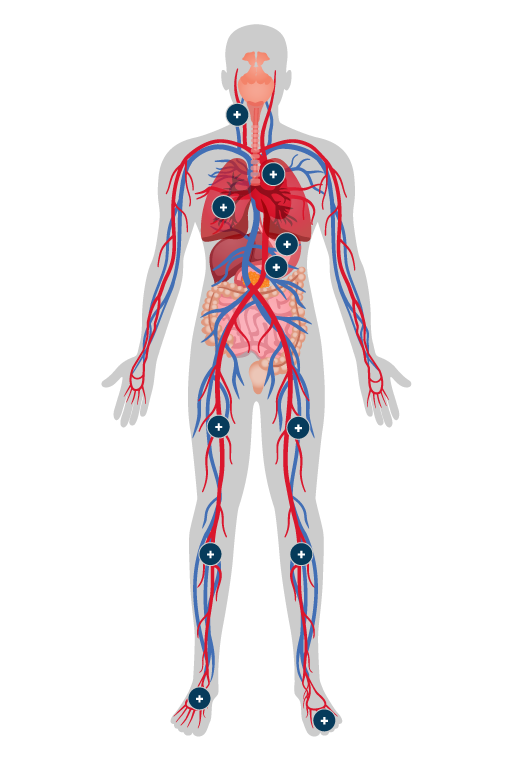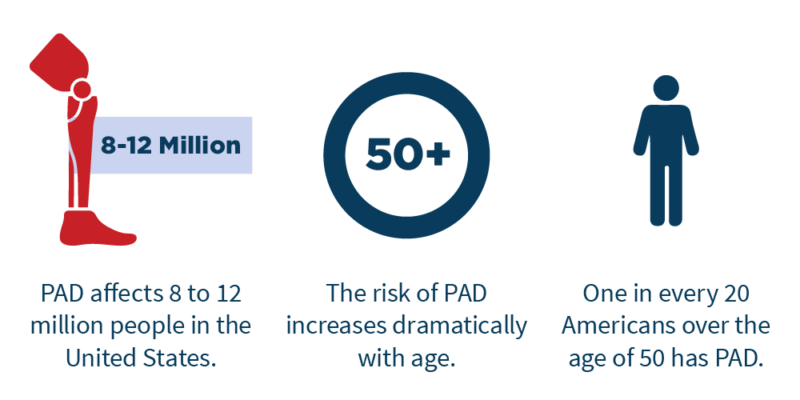KNOW THE FACTS. KNOW THE SIGNS. KNOW YOUR RISK.
More than 18 million Americans suffer from Peripheral Artery Disease (PAD), a common medical condition where a build-up of plaque makes it difficult for blood to circulate through the arteries. PAD primarily affects the legs and feet. and is the leading cause of amputation in America. Knowing the facts, risk factors and symptoms associated with PAD, and getting proper treatment could quite literally save your limb and your life.

Are You at Risk for Peripheral Artery Disease?
Health risks can be confusing and hard to grasp when you are faced with a serious disease like peripheral artery disease (PAD). However, once you begin to understand the importance of risk factors and their effect on your health, you can begin to learn how to prevent your vascular condition from worsening.
A health risk is a chance or likelihood that a specific life factor will affect your health. Knowing the risks and monitoring your symptoms can prepare you for a conversation with your doctor. If diagnosed, they can help you manage your PAD. Left untreated, PAD puts you at an elevated risk for heart attack, stroke and amputation.

What are the Risk Factors for PAD?
If you have two or more of the following, you should talk to your doctor about PAD:
- Diabetes
- High blood pressure and high cholesterol levels
- Heart disease such as Coronary Artery Disease (CAD)
- Current or past smoker
- Family history of heart or vascular disease
- Overweight (body mass index over 30); sedentary lifestyle
- Over 70 years old (or over 50 if you also smoke and/or have diabetes)
What are the Symptoms of PAD?
PAD symptoms include:
- Painful cramping in the hip, thigh or calf muscles after certain activities such as walking or climbing stairs
- Leg numbness or weakness
- Coldness in lower leg or foot
- Sores on toes, feet or legs that won’t heal
- Change in color of skin on legs
- Hair loss or slower hair growth on feet and legs
- Slower growth of toenails
- Shiny skin on legs
- Weak or no pulse in legs or feet
- Erectile dysfunction in men
PAD and Chronic Wounds
If you have any sores or wounds on your feet, PAD will prevent them from being able to heal properly, so it’s important to check your feet daily for any cuts or swelling. If you notice that wounds are slow to heal or not healing at all, it’s important to talk to your doctor as soon as possible.
Gangrene is a common symptom seen in patients who have PAD and diabetes. It is characterized by dry, shriveled skin that changes from blue to black and eventually flakes off. Gangrene can also cause your feet to be cold, numb or painful.
Please consult your doctor immediately to schedule a diagnostic exam if you have noticed any signs that may point to PAD. Make sure your primary doctor checks the pulse in your legs and the color, temperature and overall appearance of your feet and legs during your exam.

